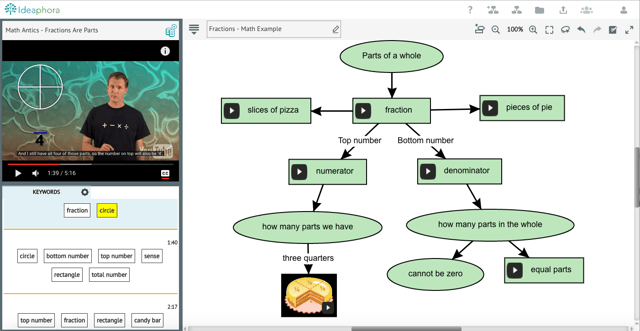Concept mapping in math is often overlooked yet it can significantly deepen students’ understanding of mathematical concepts, particularly those that are complex or hard-to-understand.
According to authors Pamela Grossman, Alan Schoenfeld, and Carol Lee, writing in the book, Preparing Teachers for a Changing World: What Teachers Should Know and Be Able to Do, mathematics education should focus on helping students learn when a particular approach is useful and how to apply appropriately, which greatly depends on robust understandings of concepts. They state, “robust understandings come from seeing the same concepts from multiple perspectives and representing and using them in multiple ways, thereby developing connected webs of understanding rather than rote memorization of facts and procedures. Common Core and other state standards require students learn math concepts as rigorously as they learn skills and fluency, necessitating a shift from past teaching practices. Students must be able to access concepts from a number of perspectives in order to see math as more than a set of mnemonics or discrete procedures.
Knowledge maps can aid students in developing a deep conceptual understanding of math (as well as developing math literacy). Through mapping, students learn about the concept and its interrelationships with other mathematical ideas, procedures and applications. By having students develop visual maps of math concepts in Ideaphora, they can become aware of their gaps in understanding in a comfortable and focused digital environment. This process motivates students to proactively improve their knowledge, and they can demonstrate their progress over time through multiple iterations of their maps.
The example provided in this post shows how a student could use Ideaphora to explore the concept of fractions to develop greater understanding, which is a critical foundation for success in high school math. After beginning a unit on fractions, teachers could have students create a visual map to define the term and assess their current level of understanding. Then, assign videos and reading materials and have students modify their concept maps to correct or expand on their logic as well as add images to provide further visual aids. Finally, after students have the opportunity to practice problem solving with fractions, they could revise their maps again to reflect their deeper personal knowledge of fractions.
Applying concept mapping to more challenging math subjects such as algebra and calculus may be a means to help educators improve math scores in high school. The latest PISA results, which tests 15 year-olds in more than 70 countries, show the math scores of U.S. students have declined over previous years. Experts note that students’ math performance appears to fall off as they advance in grade level.
The following resources illustrate how concept mapping can be used in a variety of mathematical settings and across grade levels:
- College math:
- Teacher education: http://www.nctm.org/Publications/Teaching-Children-Mathematics/2015/Vol21/Issue9/Mapping-the-Way-to-Content-Knowledge/
Try Ideaphora Classroom in your math lessons with your students. Sign up to participate in our free Classroom Pilot program or explore it now yourself in a no-cost trial.

